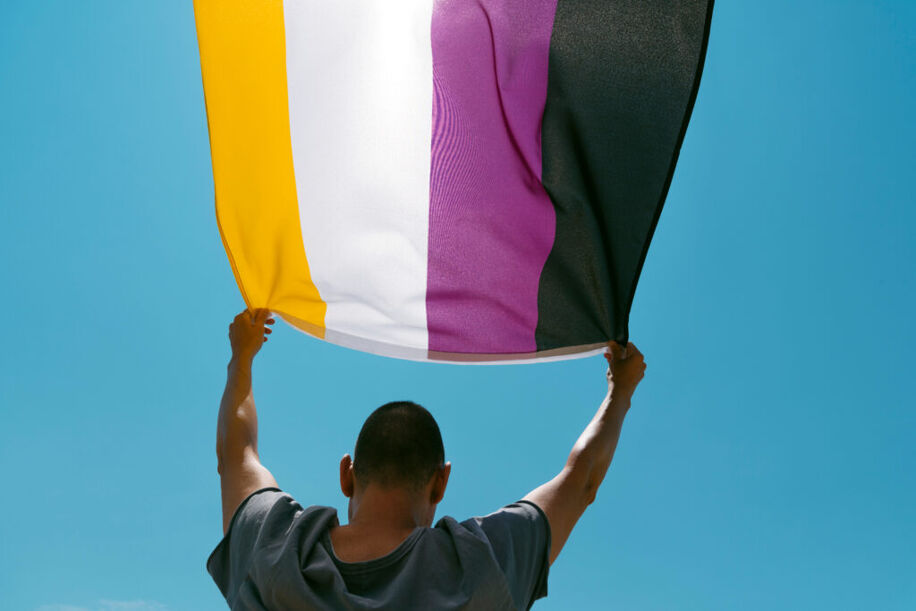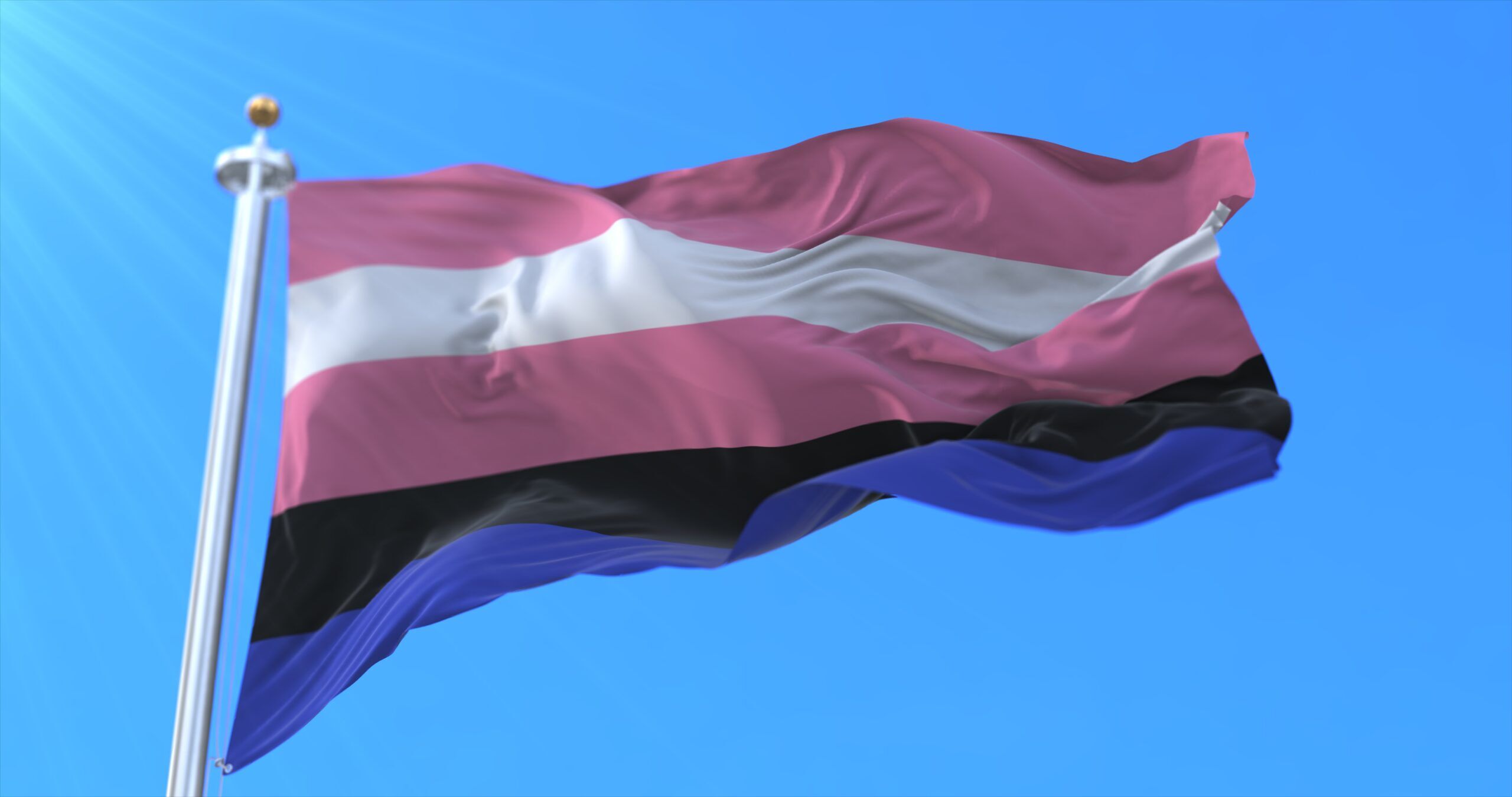The genderfluid flag we know and love today was by JJ Poole in 2012. The flags intention was to bring awareness to those who do not identify themselves as having a fixed gender.
The genderfluid identity falls under the nonbinary umbrella term; some might wave both the genderfluid flag and the nonbinary flag to express their identity. However many find that the genderfluid flag is more specific to their identity experience.
What do the colors of the genderfluid flag stand for?
In order from top to bottom this is what each stripe stands for:
- Pink: Femininity.
- Blue: Masculinity
- Purple: Both masculinity and femininity.
- Black: Lack of gender.
- White: All genders.
Alternative version of the genderfluid flag
A variety of genderfluid individuals will wave the nonbinary flag or the genderqueer flag as this identity falls under that greater umbrella. Under the non-binary umbrella we find a variety of identities such as agender, demigender, genderqueer, and of course genderfluid. All these identities have one thing in common: not conforming to the traditional binary ideals that society imposes. It is however important to note that not all genderfluid people necessarily use the umbrella term nonbinary to describe themselves.
With that being said both the genderqueer flag and the nonbinary flag are alternate versions to the genderfluid flag, or are sometimes used in tandem with the genderfluid flag depending on that person’s way of expressing themselves.
Genderqueer Flag
(insert picture of genderqueer flag)
Before the wider adoption of the nonbinary identity and creation of the nonbinary flag, a lot of nonbinary individuals identified with the genderqueer flag.
The modern genderqueer flag was created by Marilyn Roxie in 2011 and is the 3rd and final version of the flag.
It has three horizontal stripes in three colors. The colors symbolize as follows:
- Lavender: Androgyny and queerness.
- White: Agender identity and gender neutrality.
- Green: Genders outside of the binary.
Nonbinary flag

The nonbinary flag was created by Kye Rowan in 2014. The Rowan flag has four distinct horizontal stripes. In order from top to bottom, each stripe stands for:
- Yellow: People whose gender falls out of the binary.
- White: People with many or all genders.
- Purple: People with genders that mix both male and female.
- Black: Those who consider themselves to not have a gender.
Want to learn more about being genderfluid?
The term genderfluid refers to someone whose gender identity is not fixed. This means that this individual is flexible when it comes to how they present their gender. For some people being gender fluid is temporary until they find a gender identity that matches them, others are indefinitely gender fluid and don’t see themselves becoming fixed on one gender.
Related:
The Rubber Flag
The rubber community is a subculture that involves wearing or fetishizing latex clothing.
The way in which genderfluid people express themselves changes from person to person.
From changing your pronouns to medical procedures to the way you dress, there are endless ways to combat the traditional norms that society tries to push on us.
Closing thoughts
The bottom line is representation matters. Flags are a necessary tool when it comes to representing a community, identity, or sexuality. If you are genderfluid waving a flag might be a great way to let someone know or to simply feel pride for the community you are a part of.
This is not only important for community members who want to feel unified, but also for visibility purposes. The colors and symbols on a flag show the world what it means to be a part of that community and give everyone a chance to show their pride.
Visit our identities page to learn more about other gender and sexual identities that make up the LGBTQ+ community, and subscribe to the INTO newsletter to keep on top of the latest happening in our community.
Don't forget to share:
Help make sure LGBTQ+ stories are being told...
We can't rely on mainstream media to tell our stories. That's why we don't lock our articles behind a paywall. Will you support our mission with a contribution today?
Cancel anytime · Proudly LGBTQ+ owned and operated
Read More in Culture
The Latest on INTO
Subscribe to get a twice-weekly dose of queer news, updates, and insights from the INTO team.
in Your Inbox














